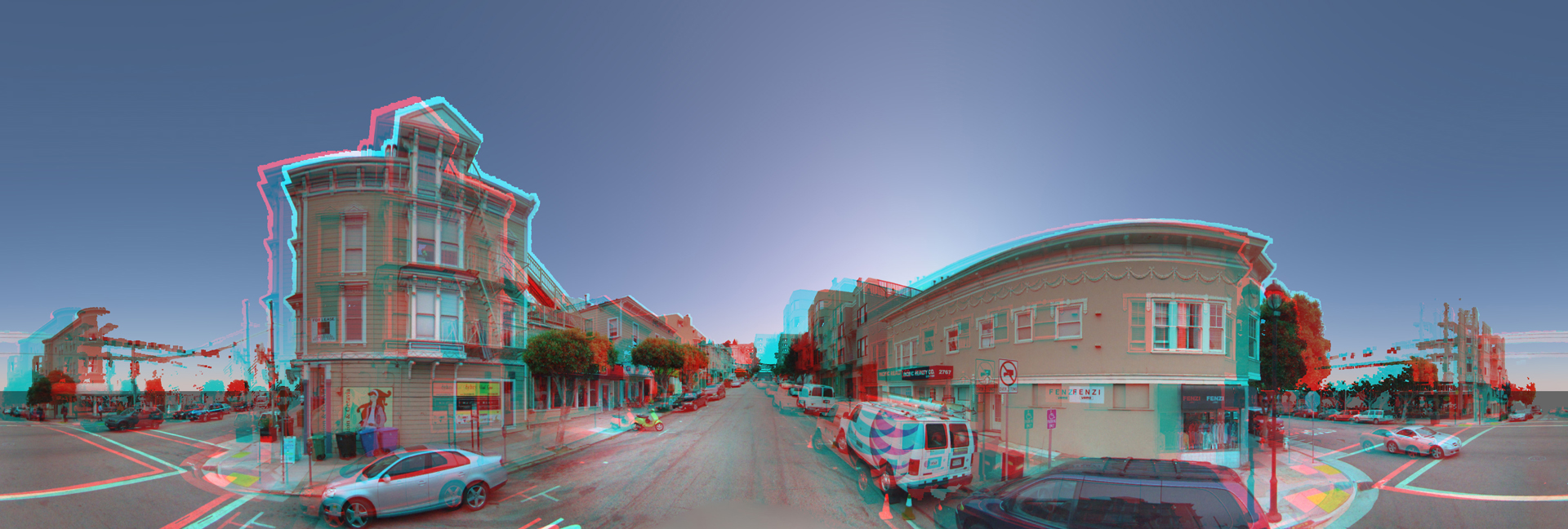“Omnistereo images from ground based lidar” by Barnes
Conference:
Type(s):
Title:
- Omnistereo images from ground based lidar
Presenter(s)/Author(s):
Abstract:
Street level panoramic images provide users with an immersive means to remotely explore street level features. Stereoscopic panoramic images, also referred to as omnistereo panoramics provide an even more compelling view. As 3D display technology becomes less expensive and more ubiquitous; the ability to view these types of images is far easier. In addition to providing a wow factor, 3D stereo enhances the sense of scale and distance, factors which are useful when planing a visit a new location. Omnistereo panoramas cannot be photographed by a pair of full 360° panoramic cameras as each would capture the other when the panoramic image is taken. Typically they are taken by a pair of cameras mounted on either end of a bracket which is then rotated [Peleg et al. 2001]. Each image is broken into a set of successive strips. These strips are then mosaiced together to form the left and right panoramic image. This, however, requires the camera remains stationary while the pictures are taken, and unless the rotation rate and shutter speeds are quite high, that the scene remain static as well. These two restrictions prevent the live capture of panoramic data from a vehicle driving down a busy street. The technique described here uses very dense Lidar and calibrated panoramic images captured by a ground mobile collection vehicle equipped with a Lidar unit and a single panoramic camera, driven at posed speed limits, to automatically create street level omnistereo panoramas. These stereo images are higher quality and therefore more realistic than any other method which uses mobile collection.
References:
1. Peleg, S., Ben-Ezra, M., and Pritch, Y. 2001. Omnistereo: panoramic stereo imaging. IEEE Transactions on Pattern Analysis and Machine Intelligence 23, 3, 279–290.
2. Yang, R., and Wang, L. 2006. View-Dependent Textured Splatting. Environment 22, 7, 456–467.





